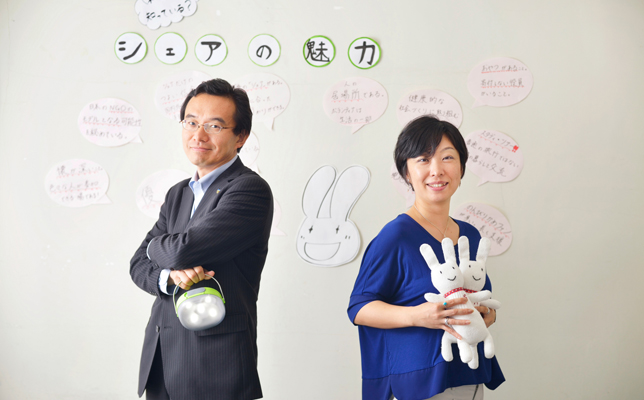2018.01.26Our Partners
Toward an Effective Public-Private Partnerships: UNDP Representative Office in Japan
2014.08.29 Our Partners
Services for the Health in Asian & African Regions (SHARE) is an organization dedicated to the promotion of healthcare services in Japan and Asia's developing countries. In Cambodia, SHARE is active in Prey Veng Province, one of the country's poorest regions. We spoke with SHARE Secretary General Mami Sato on how solar lanterns are being used in healthcare, an area that directly impacts people's lives (interviewed on June 4, 2014).
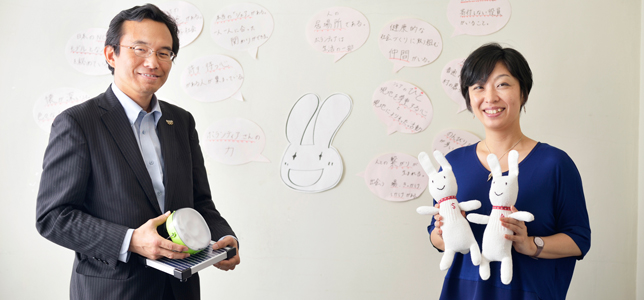
Hoshi: We held a joint talk session with SHARE about a year ago to introduce your activities to Panasonic employees. It was great working with you then.
Sato: Thank you. We really appreciated the opportunity to spread the word about our activities.
Since our founding in 1983, under our "health for all" philosophy, SHARE has worked to provide basic medical services so that those living under difficult circumstances can live in better health. Today, we are active in Cambodia, Timor Leste, Thailand and Japan.
Hoshi: Instead of providing direct medical services to people, your approach is unique in that you focus on training local health workers.
Sato: One of our core philosophies is to create a system where local people can play a central role in providing sustainable health services. We are constantly aware of doing what is necessary within a set time frame so that the people of the community will be able to pick up and carry on the services on their own once that period is over.
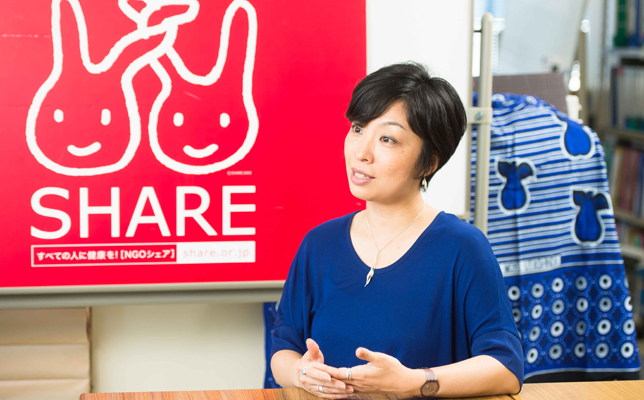
Hoshi: In terms of sustainability, it is important that the community can be empowered to take ownership of its own health management. Could you say more about the healthcare challenges that Cambodia faces?
Sato: Cambodia was affected by the war in Vietnam in the 1960s, followed by civil war during the Pol Pot years, which resulted in a complete collapse of the basic human resources and systems necessary to build a nation. The country gradually started recovering in the 1990s, but there is still an absolute shortage of human resources in the healthcare field, as well as inadequate knowledge and capabilities among healthcare professionals. That is why we focused particularly on improving young children's health, and trained people so that public health centers that provide frontline medical services can deliver adequate care to children, and respond as needed to people experiencing difficulty gaining weight or those who have become ill.
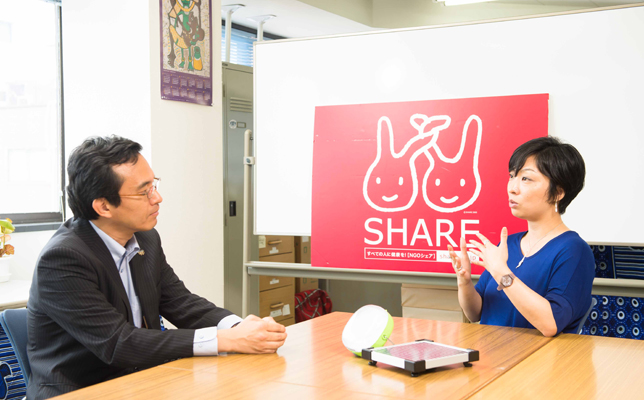
Hoshi: Prey Veng Province is an area even within Cambodia with high levels of infant mortality and malnutrition. What do you think is needed to improve children's conditions there?
Sato: One problem is that they don't have access to enough nutrition due to poverty, but another aspect of this is lack of knowledge. For example, some mothers go back to work in the fields or go away to work before the end of the recommended six-month breastfeeding period. In such cases, older siblings and grandparents take over looking after the child, which means the child cannot obtain sufficient nutrition through breast milk at the necessary time, and often, not enough dietary care or attention when she or he gets sick.
Powdered baby formula is available, but these are basically expensive imported products with preparation instructions written in foreign languages, which sometimes leads to incorrect use, like under-measuring the amount of formula or adding sugar to the formula. To deal with this, we provide baby food preparation classes and other educational activities geared toward mothers.
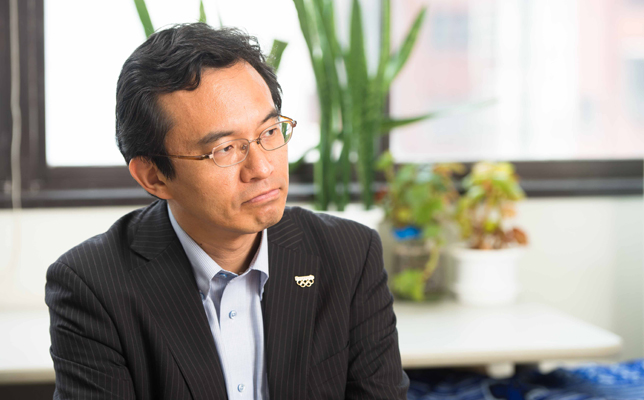
Sato: The donated solar lanterns are used at the health centers at night when there are emergency patients and for childbirth. Before, we did not have enough lighting for these services, but thanks to the solar lanterns, we can now provide care with adequate light.
Hoshi: On my last visit, I was able to attend a nighttime delivery, by coincidence. I was very moved after seeing with my own eyes how solar lanterns are contributing to bringing young lives into this world. Roughly how many deliveries do you have in a month?
Sato: We have anywhere from 20 to 40 deliveries per month at each health center. There is a delivery almost every day and we need at least two midwives to keep things under control.
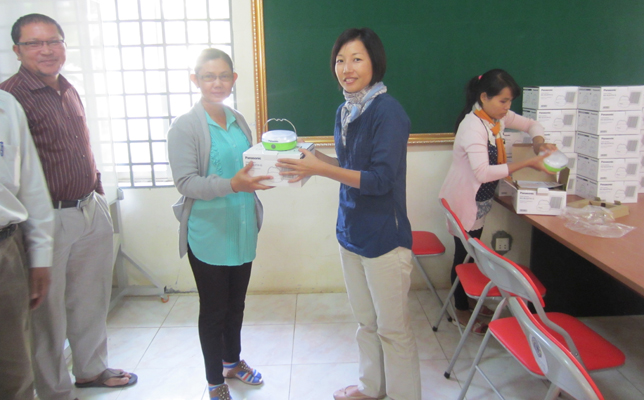
A midwife receiving a solar lantern
Hoshi: That's a lot. How else are solar lanterns used?
Sato: They are very helpful for the health volunteers. There is a designated health volunteer for every village, whose role is to serve as a bridge between health centers and patients. The solar lanterns guide them safely through streets at night when attending to patients. Also, until now, even when volunteers carried cell phones, they would often run out of batteries. But now they can charge their phones with the solar lanterns, so we have heard that communication between health centers and the health volunteers has become much smoother.
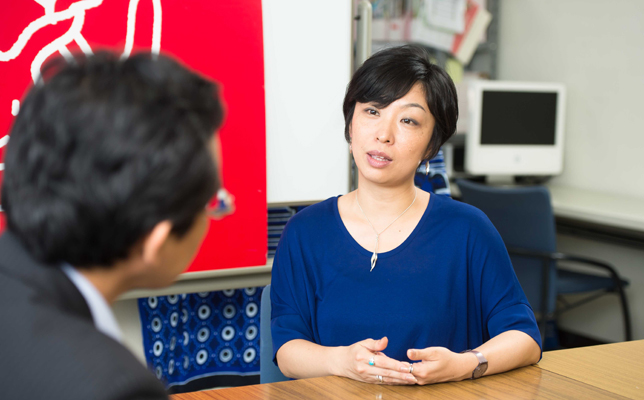
Sato: Everyone loves the new solar lanterns because they are more compact and easy to use. So much so that some people have said that they are willing to buy them with their own money!
Hoshi: Thank you very much. We have been receiving more and more feedback like that. As a matter of fact, in Myanmar, we have started selling the solar lanterns for those who can afford them. It would be nice to start something like that in Cambodia as well. Lastly, please tell us of any requests you may have regarding the 100 Thousand Solar Lanterns Project.
Sato: We hope to continue with the donations while discussing how we can go beyond that and have the greatest possible positive impact. We are capable of matching local needs with the ideas of our supporters, so we want to make sure that we provide support to those in greatest need, considering the timing, the process, and the recipients.
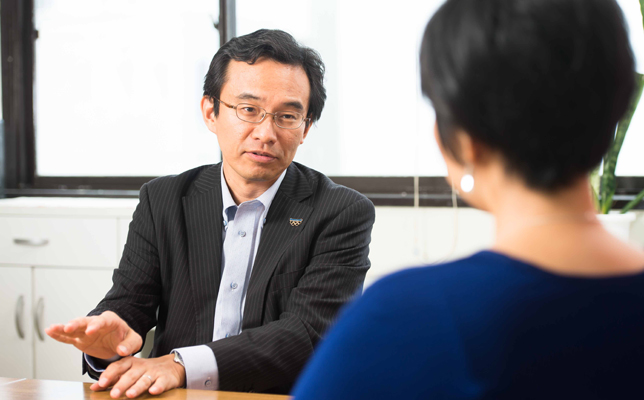
Hoshi: I agree. I especially remember in donating solar lanterns for the first time how carefully you looked at what is most needed for healthcare services.
Sato: Yes. When we support people through material products, we make decisions only after careful thought. The solar lantern donation came at a perfect time, just when we were starting to realize the importance of electricity and other aspects of basic infrastructure that are vital for our trainees to make the most of their acquired skills.
Hoshi: It is important for us to work together with grassroots NGOs like SHARE. We look forward to continue working with you in the future so that we make the most of what solar lanterns can bring in solving social challenges.
